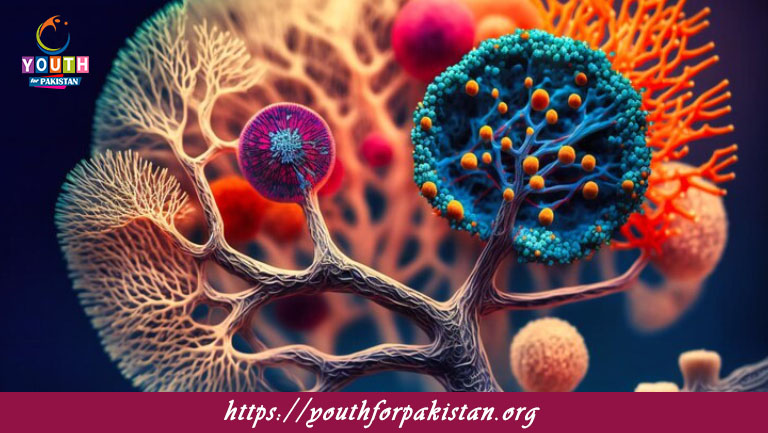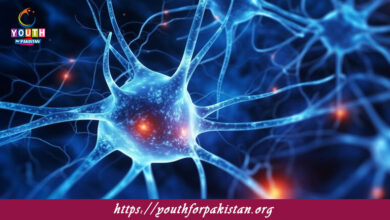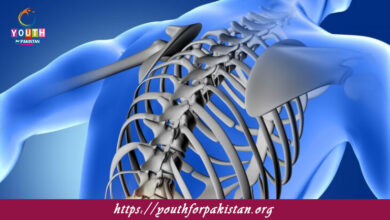Mechanism Of Action Of Enzymes MDCAT MCQs with Answers

Welcome to the Mechanism Of Action Of Enzymes MDCAT MCQs with Answers. In this post, we have shared Mechanism Of Action Of Enzymes Multiple Choice Questions and Answers for PMC MDCAT 2024. Each question in MDCAT Biology offers a chance to enhance your knowledge regarding Mechanism Of Action Of Enzymes MCQs in this MDCAT Online Test.
What is the role of an enzyme in a chemical reaction?
a) Increases the activation energy
b) Decreases the activation energy
c) Decreases the reaction rate
d) Is consumed during the reaction
The specific location where a substrate binds to an enzyme is called the:
a) Active site
b) Binding site
c) Allosteric site
d) Receptor site
The induced fit model of enzyme action suggests that:
a) The active site has a rigid structure
b) The enzyme changes shape to fit the substrate
c) The enzyme and substrate fit perfectly like a lock and key
d) The substrate changes shape to fit the enzyme
Enzymes work by:
a) Providing energy to the reaction
b) Altering the equilibrium constant of a reaction
c) Lowering the activation energy of the reaction
d) Binding irreversibly to substrates
Which of the following is not a feature of enzyme action?
a) High specificity
b) Formation of an enzyme-substrate complex
c) Permanent alteration of the enzyme
d) Reusability of the enzyme
The mechanism through which enzymes speed up reactions is by:
a) Increasing the energy required for the reaction
b) Forming new bonds in the product
c) Stabilizing the transition state
d) Altering the substrate permanently
Enzymes catalyze reactions by:
a) Breaking down themselves
b) Forming stronger bonds with the product
c) Decreasing the energy needed for reactants to reach the transition state
d) Increasing the concentration of products
What happens to the enzyme after it catalyzes a reaction?
a) It becomes part of the product
b) It is consumed in the reaction
c) It is regenerated and can be reused
d) It is inactivated permanently
Which term refers to the temporary molecule formed when an enzyme binds to its substrate?
a) Enzyme-product complex
b) Enzyme-substrate complex
c) Transition state complex
d) Allosteric complex
Which of the following best describes the lock-and-key model of enzyme action?
a) The enzyme’s active site is rigid and fits the substrate exactly
b) The enzyme’s active site changes to fit the substrate
c) The substrate changes to fit into the enzyme
d) The enzyme does not interact with the substrate directly
The active site of an enzyme is:
a) A rigid, unchangeable site on the enzyme
b) A site that is highly specific to the substrate
c) Always located at the allosteric site
d) Independent of the substrate’s structure
Enzyme specificity is mainly due to:
a) The size of the enzyme
b) The shape of the active site
c) The enzyme’s concentration
d) The enzyme’s pH
Which of the following statements about enzymes is true?
a) Enzymes are used up during a reaction
b) Enzymes increase the rate of a reaction by changing the reaction equilibrium
c) Enzymes are highly specific for their substrates
d) Enzymes do not bind to substrates
Which of the following is the correct term for the energy required to start a chemical reaction?
a) Activation energy
b) Kinetic energy
c) Potential energy
d) Catalytic energy
An enzyme’s ability to function can be affected by:
a) Temperature and pH
b) Substrate concentration
c) Presence of inhibitors
d) All of the above
What happens to enzyme activity when the temperature is raised beyond the enzyme’s optimum level?
a) Activity increases indefinitely
b) Activity decreases due to denaturation
c) Activity remains the same
d) Activity increases as long as substrate is available
The enzyme-substrate complex is formed during which stage of catalysis?
a) Before the reaction starts
b) During the transition state
c) After the reaction is completed
d) During the rate-determining step
What is the function of a cofactor in enzyme catalysis?
a) It inhibits the enzyme
b) It binds to the active site, changing its shape
c) It enhances the enzyme’s ability to bind the substrate
d) It permanently alters the enzyme
Allosteric regulation of enzyme activity occurs when:
a) A molecule binds to the enzyme at a site other than the active site
b) The substrate binds irreversibly
c) The enzyme is broken down
d) The substrate concentration is very high
Which of the following statements is correct about enzyme-substrate interaction?
a) Enzymes form strong covalent bonds with substrates
b) Enzymes form temporary, weak bonds with substrates
c) Enzymes are consumed in the reaction
d) Enzymes alter the substrates permanently
Enzyme inhibition where the inhibitor competes with the substrate for the active site is known as:
a) Non-competitive inhibition
b) Allosteric inhibition
c) Competitive inhibition
d) Irreversible inhibition
Which is true for the mechanism of competitive inhibition?
a) The inhibitor binds to the allosteric site
b) The inhibitor binds to the same active site as the substrate
c) The inhibitor binds irreversibly to the enzyme
d) The inhibitor decreases Vmax without affecting Km
The catalytic activity of an enzyme depends on its:
a) Molecular weight
b) Shape and structure
c) Inhibitors
d) Affinity for water
What happens to the reaction rate when an enzyme is saturated with substrate?
a) The reaction rate continues to increase
b) The reaction rate decreases
c) The reaction rate remains constant at maximum
d) The enzyme denatures
An enzyme that changes shape after substrate binding exhibits:
a) Lock and key model
b) Competitive inhibition
c) Induced fit model
d) Non-competitive inhibition
Enzymes lower the activation energy of a reaction by:
a) Providing additional energy
b) Binding to the substrate
c) Making the transition state more stable
d) Increasing the reactant concentration
Which of the following best describes the transition state in an enzyme-catalyzed reaction?
a) The highest-energy state of the reaction
b) The lowest-energy state of the reaction
c) The enzyme-substrate complex formation
d) The final product state
What is the effect of an enzyme on the reaction equilibrium?
a) It shifts the equilibrium toward the products
b) It shifts the equilibrium toward the reactants
c) It speeds up both forward and reverse reactions but does not change the equilibrium
d) It decreases the amount of product formed
Enzyme-catalyzed reactions follow which type of kinetics?
a) Michaelis-Menten kinetics
b) Zero-order kinetics
c) First-order kinetics
d) Second-order kinetics
What is the role of a transition state in an enzyme-catalyzed reaction?
a) It has lower energy than the substrates
b) It has higher energy than both substrates and products
c) It is a permanent structure formed during the reaction
d) It is the final form of the product
A substrate binds to the active site of an enzyme through:
a) Covalent bonds
b) Weak interactions like hydrogen bonds
c) Permanent ionic bonds
d) Repulsive forces
An enzyme that catalyzes the addition of a phosphate group to a molecule is called a:
a) Hydrolase
b) Transferase
c) Kinase
d) Isomerase
The energy barrier that must be overcome for a reaction to occur is called the:
a) Equilibrium energy
b) Free energy
c) Activation energy
d) Catalytic energy
What is the mechanism by which enzymes decrease the activation energy of a reaction?
a) By stabilizing the reactants
b) By stabilizing the products
c) By stabilizing the transition state
d) By stabilizing the final product
If you are interested to enhance your knowledge regarding Physics, Chemistry, Computer, and Biology please click on the link of each category, you will be redirected to dedicated website for each category.




